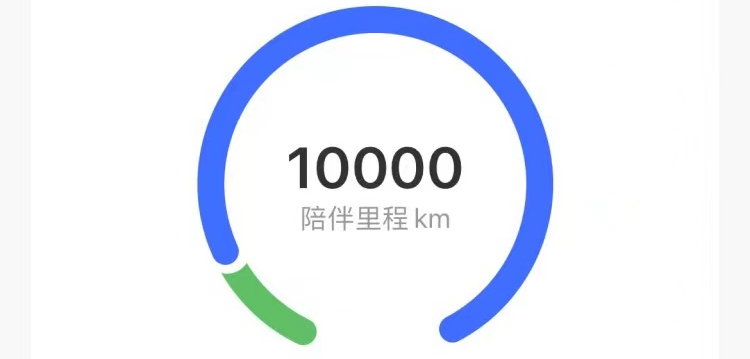Lucky enough to pick up my L9 in the first batch, got it on August 30th, and it’s been 40 days since then.
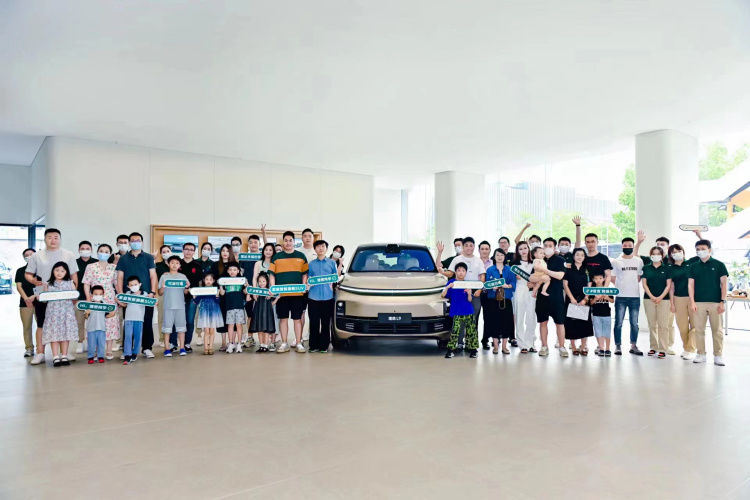
Recently, I have been driving a lot due to job transfer and also went to my hometown Yinchuan during the National Day holiday.
I originally planned to share some maintenance notes for the first maintenance after 10,000 km, but I just realized that an extended range upgrade is needed before the first maintenance, which requires driving up to 10,000 km. So, I’ll wait for the first maintenance.
First, let me share my driving experience after driving 10,000 km.
I use the ADAS system quite a lot, reaching 80%. I find it really helpful in saving energy and I also hope to have a better understanding of the current software and hardware capabilities, so that I can cooperate better with it.
Before this, I was also a first-generation owner of the 2020 model baby blue, so I can make some comparisons.
I won’t go into the advantages and disadvantages that others have mentioned.
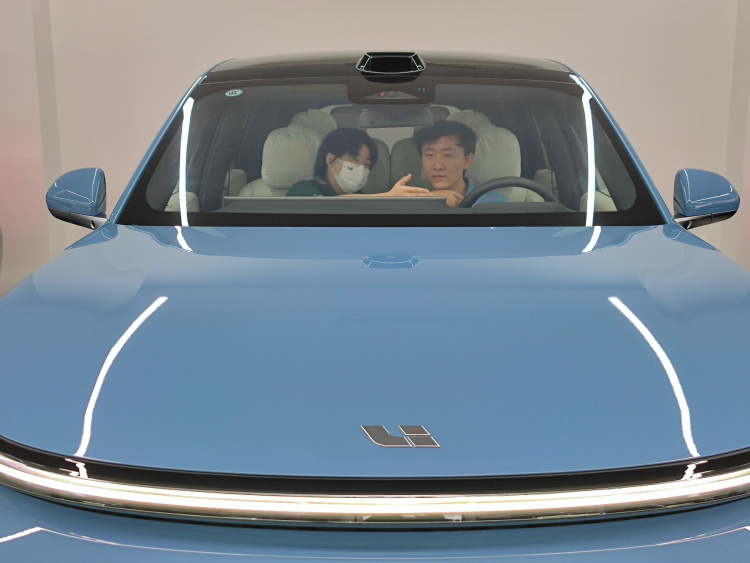
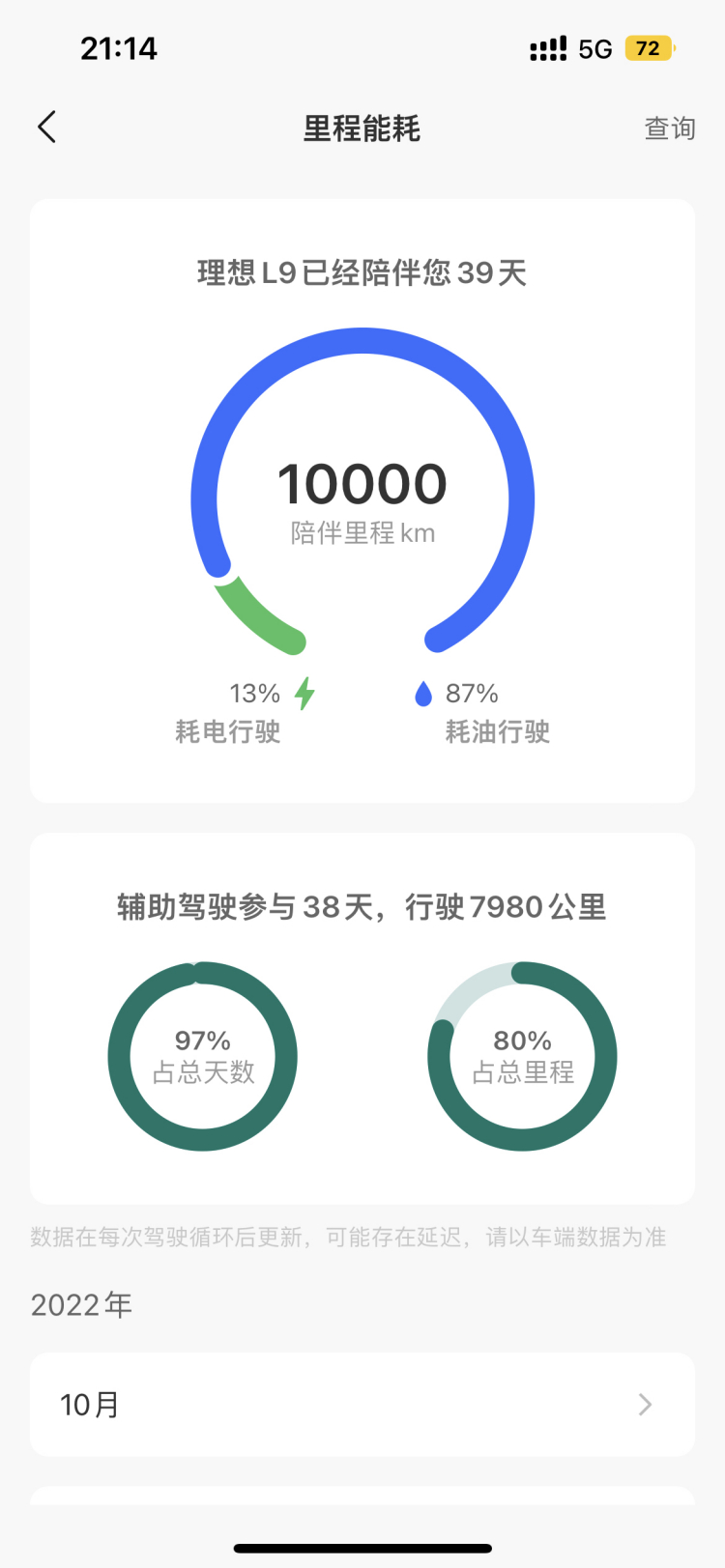
Comparing the Improvements of L9 to the ONE
In terms of driving-related, comfort, and software order:
Smaller Turning Radius
The most obvious change is that the turning radius is smaller now. In the past, I needed to reverse when making a U-turn, but now after changing the car, I can go straight through. It’s much smoother when passing over speed bumps.
Lower Energy Consumption
It’s far better than ONE. When cruising at a speed of 130 km/h on the highway, ONE’s display shows around 10.4 kWh/100 km, while the actual energy consumption is around 11 kWh/100 km.
L9 at the same speed shows 9.1 kWh/100 km on the display, and the actual energy consumption is 10 kWh/100 km.
This data should further decrease after the first maintenance, which is praiseworthy.
This may also be related to the automatic adjustment of the suspension. If the current suspension height is “standard,” when the vehicle speed exceeds about 120 km/h, or the vehicle speed exceeds about 110 km/h and continues for about 30 seconds, the suspension height will automatically adjust to the “low” height. Afterward, when the vehicle speed drops below about 70 km/h, or the vehicle speed is lower than about 80 km/h and continues for about 10 seconds, the suspension height will automatically adjusts back to the “standard” height.
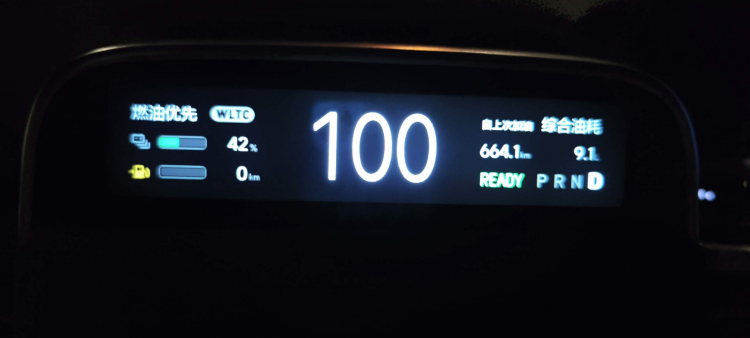
Comfort Configuration
-
The seat comfort is excellent! The first time I went for a test drive, the seats felt so soft that I couldn’t feel the suspension changes clearly.2. Storage space is highly praised! It’s much better than that of the ONE model. The small storage compartment at the lower left of the steering wheel holds the driving license and various types of bills and sundries. I put some spare change in there, and I no longer have the feeling of clutter scattered about. The compartment under the central control console is perfect for a small handbag!
-
The fridge is really amazing! I initially thought it was just a fridge before taking delivery of the car, but it turned out to be amazing. It’s both cooling and heating. It will be even better in the winter.
-
The automatic air purifier, automatic low-beam headlight, automatic high-beam headlight, and other configurations that were not advertised are very useful in practice. Watching the automatic high-beam lights turn on and off on the high-speed highway at night is also an interesting thing. It automatically turns on when there is no car ahead and the lighting is insufficient, and turns off when a car appears.
NOA
After updating to version 4.0.3 on September 28th, I deeply felt the progress of the vehicle.
NOA is much more useful than before. When overtaking, it no longer slows down due to the car in the right lane being slightly to the left. The phenomenon of LKA (lane keeping assist) and the driver competing for the steering wheel has also been greatly alleviated.
By the way, almost at the same time, car navigation software Gaode also updated the function of “adding waypoints in the service area of the expressway”, which is well received.
Overall, the L9 is really a good car. Even if we don’t talk about the assisted driving, just considering the driving quality and comfort, I think it’s worth the price. In just over a month, it has accompanied me to many places.
Riding and running thousands of miles, seeing the hustle and bustle of the world.
Zhoushan to Yinchuan; 2264km, 27 hours, solo ride

Yinchuan to Tianjin; 1208km, 12.5 hours, solo ride
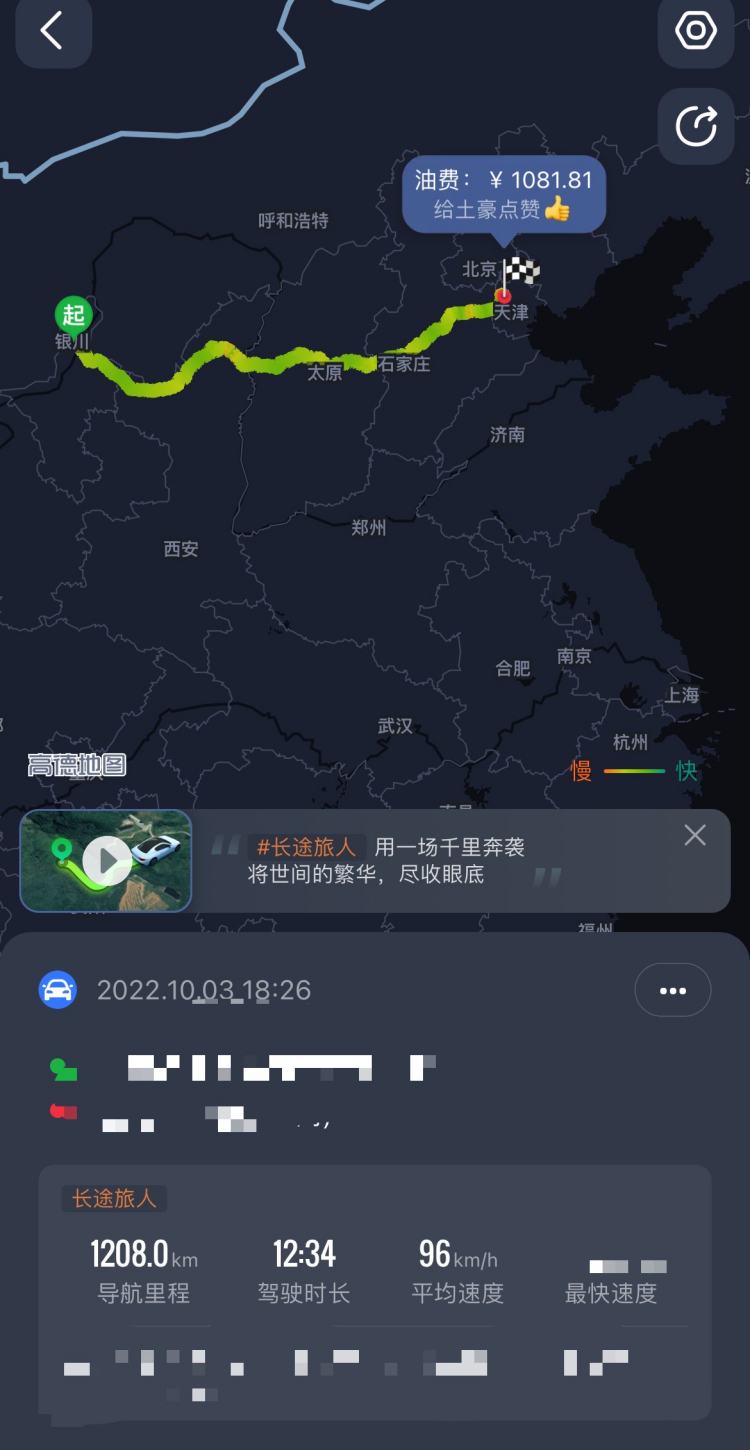
Tianjin to Hangzhou; 1208km, 15 hours (traffic jam was serious), solo ride
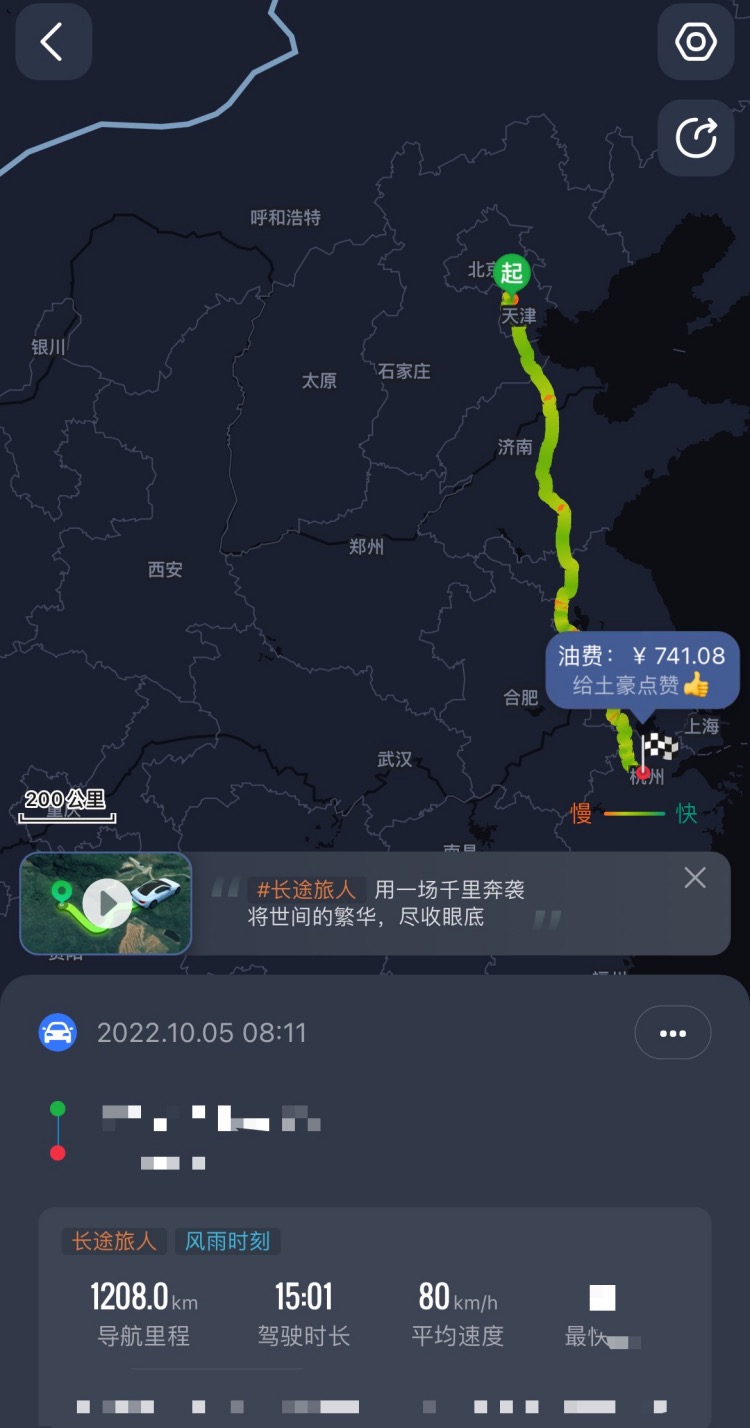
By the way, I would like to share some photos taken on the road~The translation of the Chinese Markdown text to English Markdown text while retaining the HTML tags inside is as follows:
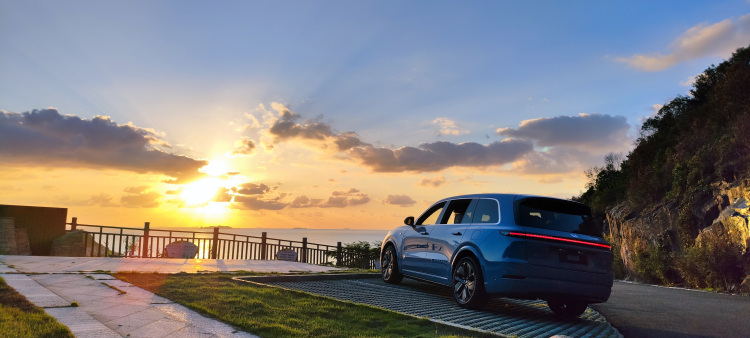

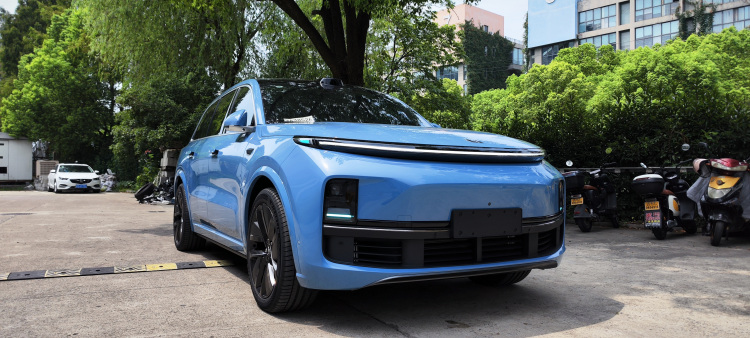
Disadvantages and Areas for Improvement
There are many advantages, which I won’t list here. Let me talk about the disadvantages and areas for improvement from my perspective.
Look Forward to the Local Music Download Functionality
Before ONE, this function was not available because the ONE car only had 32G, which was not supported.
Now that the car has 256G, local caching of some songs can effectively avoid the situation of no music to listen to when the signal is poor.
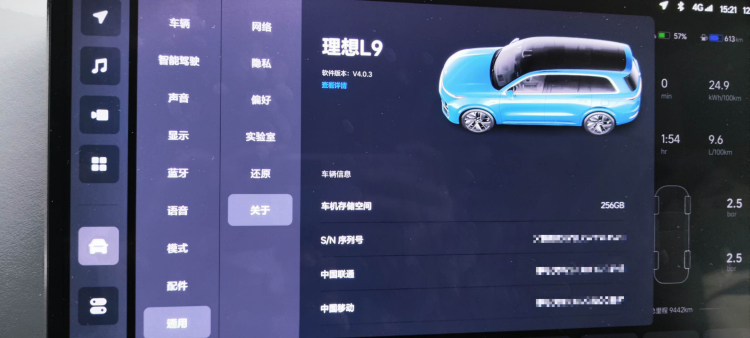
Wireless Charging Plate for Phones
It is severely criticized: the wireless charging plate for phones is almost unusable.
Some car owners use the iPhone 13 Pro Max and experience a situation where the battery level decreases even while being charged, triggering overheating protection.
Wireless charging has been criticized for heating issues since the ONE, and there has been no progress in the three years after it was updated to L9.
Why can’t a vent be added above the wireless charging pad to blow cool air? I hope that when upgrading the hardware in this area in the future, the issue of heat dissipation will be considered. Without considering heat dissipation, wireless charging is basically unusable.
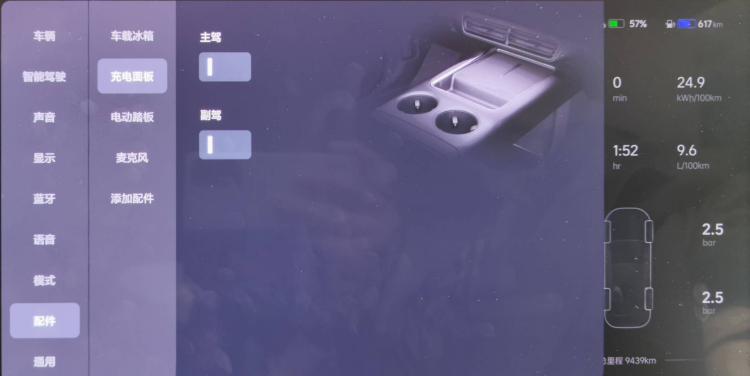
360 Surround View
The automatic pop-up in narrow alleys needs to be optimized, and the dynamic view is almost useless, with blind spots in the static splicing. My evaluation is that it is worse than the ONE.

Expectations for the Iteration of the Intelligent Cockpit
I hope that the central screen can add the function of linking Bluetooth headphones or that the entertainment screen in the rear cabin can support the connection of multiple pairs of headphones at the same time.
Currently, both the co-driver’s screen and the entertainment screen in the rear cabin can independently connect to Bluetooth headphones, but only one pair can be connected. If two people in the back seat want to watch a movie without affecting the driver, they can only wear one earbud each.
The iPhone can share audio, and the factory should learn from it.
Alternatively, the driver should be able to obtain vehicle navigation or assistive driving information without affecting the viewing experience of rear passengers watching movies.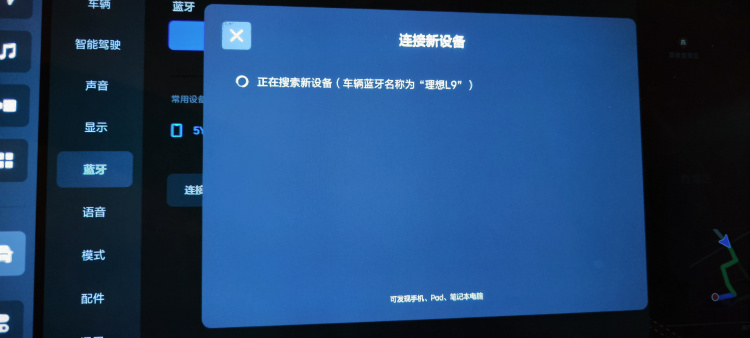
Request for More Detailed Vehicle Data Information
We are looking forward to the release of various vehicle data, including tilt information, compass, altitude, motor speed, energy flow details, etc. on L9, just like what is provided on ONE. After switching from gasoline to electric vehicles, drivers tend to be more sensitive to their driving efficiency. Even a slight increase in energy consumption from 18 to 19 would make a difference. Therefore, drivers are concerned about information such as whether they are driving uphill and what the altitude is. ONE has provided such information and we expect OTA updates to make it available on L9 as well.
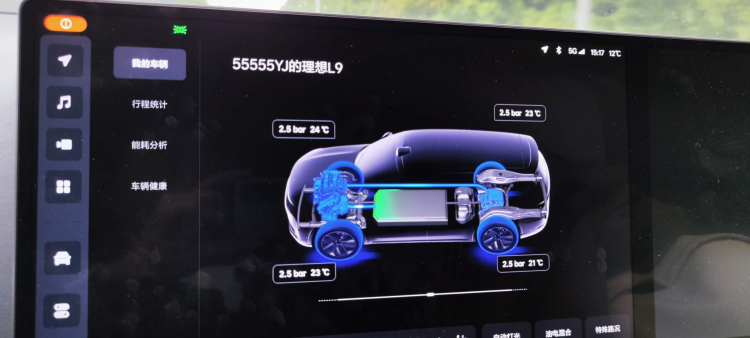
The Overall Logic of the Software
I have had this topic discussed with several friends recently. The impression I have of ONE’s software design is that the designers focus on what features they need to implement and how the features can be used most conveniently and safely. However, I feel that the overall software system of L9 lacks some logical thinking in the middle, which leads to a somewhat awkward use experience in some scenarios.
For example, when the car is parked in P mode and the middle screen displays a video from an external device, the basic vehicle settings such as air conditioning, central locking, sunroof, and clock cannot be operated or viewed. Obviously, this is because the operation code of ONE was directly copied without taking into account the extra vehicle control screen of ONE. Another example would be that the default cruise speed is set to the current vehicle speed when entering LKA. When LKA was first introduced on ONE, the default cruise speed was set according to the previous setting speed. However, it posed a safety risk when a driver drove off the highway and then turned on LKA, which resulted in the vehicle suddenly swerving. Later, an OTA update changed the default cruise speed to the current vehicle speed.
Now with L9, the acceleration of its adaptive cruise control is gradually increasing, not in one sudden burst like it used to be on ONE. Since circumstances have changed, the solution should also be adjusted accordingly rather than strictly following the original one. The current cruise speed being set according to the current vehicle speed may pose a safety risk. Therefore, I strongly recommend changing the default speed at which the vehicle enters LKA to the road speed limit (to maintain logical consistency with NOA).
Final Words
I have driven L9 for ten thousand kilometers and feel that it is totally worth it. Though there were some issues, overall, it has been a pleasant experience driving and owning the vehicle. I hope to continue driving it until it is no longer operational, and I also hope that the ideal of designing L9 software system is maintained from the bottom up it like what was done in ONE.
This article is a translation by ChatGPT of a Chinese report from 42HOW. If you have any questions about it, please email bd@42how.com.
